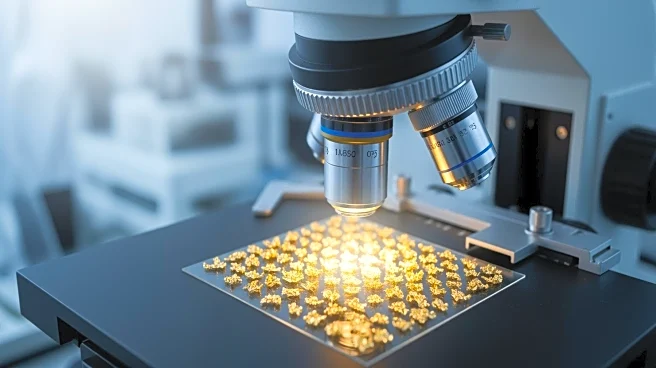What's Happening?
Researchers at Chalmers University of Technology in Sweden have created a platform that allows the observation of fundamental forces at the nanoscale using gold flakes, salt water, and light. This setup
enables the visualization of 'nature's invisible glue,' which binds the smallest objects in the universe. The platform uses microscopic gold flakes suspended in a salt solution, which are drawn toward a gold-coated glass plate under an optical microscope. The flakes stop short of touching the surface, creating nanometer-sized gaps that act as light traps, producing colorful patterns. This phenomenon is attributed to the Casimir effect, an attractive force, and an opposing electrostatic force, which together create a delicate balance resulting in self-assembly.
Why It's Important?
Understanding these fundamental forces has significant implications for various scientific fields, including physics, chemistry, and materials science. The ability to study these forces at the nanoscale can lead to advancements in drug design, biosensors, and water filtration technologies. Additionally, insights gained from this research could improve the understanding of self-assembly processes, which are crucial for the development of new materials and technologies. The platform's simplicity and effectiveness make it a promising tool for exploring the interactions between particles and the forces that govern them.
What's Next?
The researchers plan to use the platform to study the charge of individual particles and the forces acting between them. This could provide new knowledge on the pathways of medicines through the body and the development of effective biosensors and water filters. The platform's potential to study fundamental forces and material properties shows its promise as a research tool, with applications ranging from everyday products to complex scientific inquiries.
Beyond the Headlines
The platform developed by Chalmers University offers a unique method to observe and measure forces at the nanoscale, which could lead to breakthroughs in understanding how materials and structures are assembled. This research could also provide insights into larger-scale phenomena, such as galaxy formation, by applying the principles observed at the nanoscale to broader contexts.











